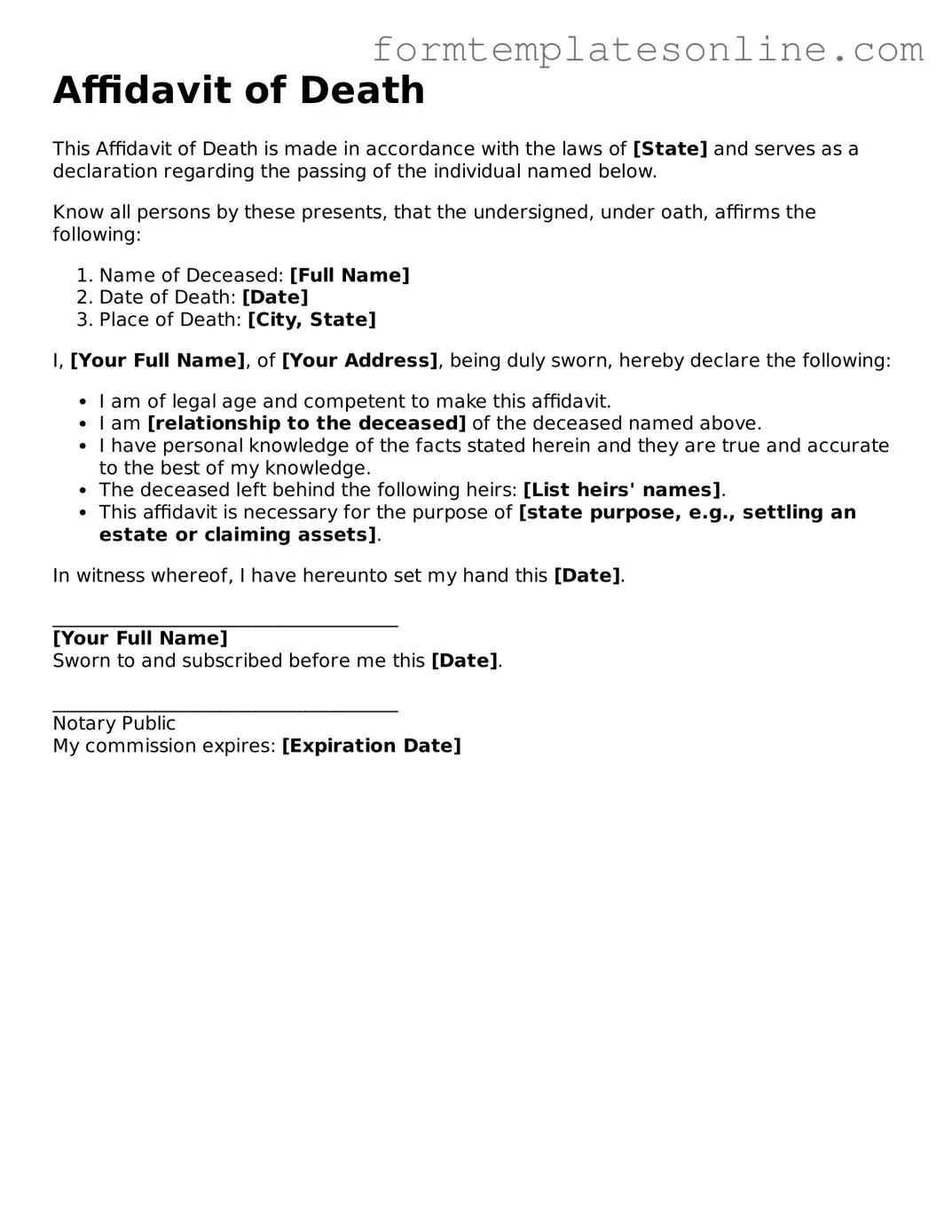What is an Affidavit of Death?
An Affidavit of Death is a legal document that confirms a person's death. It is typically used to establish the fact of death for various purposes, such as settling an estate, transferring property, or claiming life insurance benefits. The document is sworn to be true by an individual who has knowledge of the deceased's passing.
Who can complete an Affidavit of Death?
Generally, anyone who has personal knowledge of the deceased's death can complete this affidavit. This often includes family members, friends, or legal representatives. However, it is important to ensure that the person signing the affidavit is willing to swear to the truth of the statements made within it.
What information is required on the Affidavit of Death?
The affidavit typically requires the full name of the deceased, their date of birth, the date of death, and the place of death. Additionally, the affiant must provide their own name, relationship to the deceased, and a statement affirming their knowledge of the death. Some jurisdictions may require additional details, so it’s wise to check local requirements.
Do I need to have the Affidavit of Death notarized?
Yes, most jurisdictions require the Affidavit of Death to be notarized. This means that the person signing the affidavit must do so in the presence of a notary public, who will then verify the identity of the signer and witness the signing of the document. This adds a layer of authenticity and legal validity to the affidavit.
How is the Affidavit of Death used?
The Affidavit of Death can be used in various situations. It is often submitted to banks, insurance companies, or probate courts to facilitate the transfer of assets or to settle the deceased's estate. It serves as official proof of death, which is necessary for executing the wishes outlined in a will or trust.
Can I create my own Affidavit of Death form?
While it is possible to create your own Affidavit of Death, it is advisable to use a standard form that complies with your state’s requirements. Using a template can help ensure that all necessary information is included and that the document meets legal standards. Consulting with a legal professional can also provide guidance tailored to your specific situation.
